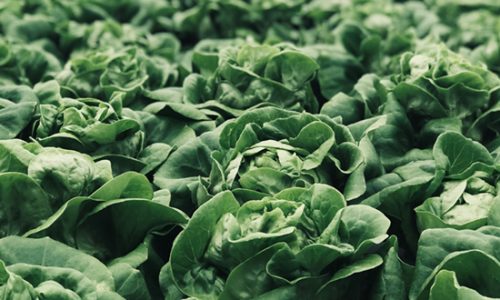
Can ‘Forever Chemicals’ Be Destroyed? Promising Research Says Perhaps!
Leah Zerbe, MS, NASM-CPT, NASM-CES via Dr. Axe – A new analysis by Consumer Reports found that toxic “forever chemicals” still lurk in supermarket and fast food containers, despite mounting public health outcries to remove it.
Used for its grease-proof properties, food packaging like paper wrappings and cardboard boxes are often coated with the nonstick chemical to keep it from seeping through and getting on your hands and clothing.
That may sound like a good thing at first glance, but it readily migrates into food, and there’s now plenty of evidence linking this chemical class to a host of health woes.
The Consumer Reports update is the latest evidence showing that this “unbreakable” chemical is ubiquitous — it’s even found in burger wrappers and salad bowls! Other recent reports show that “forever chemicals” linked to immune system damage, cancer, liver damage, decreased fertility and thyroid disruption are routinely detected in everyday products like yoga pants, bedding, tablecloths and more, too.
The worst part of all of this is that this chemical application really isn’t necessary in the first place. And it’s so widespread that, today, PFAS contamination is found inside most of us, too.
However, there is some good news. Researchers have found that a common ingredient in soap may help destroy these dangerous “forever chemicals.” According to Science:
Researchers led by William Dichtel and Brittany Trang, chemists at Northwestern University, studied numerous recipes involving DMSO. One combined a little bit of the solvent with sodium hydroxide, a common component of soap, in water. When the team heated the mix to boiling temperature, it readily degraded one of the largest subsets of PFAS compounds.
The researchers noted it does not work for all PFAS but does for some.
What Are Forever Chemicals?
Types of forever chemicals are known as PFAS. They are per- and polyfluoroalkyl substances with the following properties:
- water-resistance
- heat-resistance
- oil-resistance
Even the American Chemistry Society admits: “The chemistry that makes them so useful also makes them stick around in the environment and in us — and that could be a bad thing.”
PFAS are used commonly in:
- fire-fighting foams
- rain coats
- shoes and boots
- nonstick cookware
- stain-proof carpeting and clothing
- fast-food packaging (which means there are forever chemicals in food)
Due to their persistence and widespread use, forever chemicals are now also a tap water toxicity problem.
Just like phthalates, another widespread chemical group, it seems PFAS started off as a good thing, but without proper testing for long-term impacts on human and environmental health, we unleashed a monster.
Test Findings
Consumer Reports tested more than 100 food packaging products from restaurant and grocery chains.
PFAS contamination was detected in at least some packaging from every single chain tested. The dangerous grease-proof chemical turned up in things like:
- French fry cartons and bags
- Molded fiber salad bowls
- Sandwich wrappers
- Paper bags for chips
- Single-use paper plates
- And more
Even companies that have vowed to eliminate PFAS wrappers tested positive at low levels, likely because the “forever chemical” is widespread in the environment now and contamination is inevitable.
PFAS contamination is in the air, water, soil (and inside of us!) due to sending it to landfills, incinerating it (often in Black and Brown neighborhoods, which is an environmental justice issue), and runoff pollution that winds up in crops.
Working within the U.S.’s weak chemical regulation system also means that industry is always several steps ahead of public policy.
“Trying to ban individual PFAS is an impossible game of whack-a-mole. As soon as one is addressed, industry comes up with another.” Brian Ronholm, Consumer Reports
Separate testing by Toxic-Free Future also delivered some key findings recently, including:
- Out of the “stain-” or “water-resistant” products tested, 72% tested positive for PFAS.
- These included hiking pants, mattress pads, comforters, rain jackets, tablecloths and napkins.
- At least one product from each of the 10 retailers tested contained PFAS.
- Manufacturers are using a mixture of PFAS that includes compounds banned in other countries.
- Alternatives to PFAS for stain and water resistance are in use. Toxic-Free Future items marketed as stain- and/or water-resistant were free of PFAS.
A separate PFAS investigation from Environmental Health News and Mamavation found:
- Evidence of PFAS in women’s sportswear like yoga pants from popular brands, including Old Navy and Lululemon.
- 25 percent of the activewear tested positive in an EPA-certified lab for indications of PFAS.
- Workout leggings and yoga pants tested positive, including brands from Old Navy and Lululemon.
Why Are They Dangerous?
PFAS chemicals are linked to:
- Harm to the immune system
- Reduced vaccine efficacy
- Reproductive system damage
- Reduced fertility
- Lower birth weight
- Increased risk of certain cancers
- Metabolism problems
- Weight gain
- Impaired healthy cholesterol levels
How to Avoid Them
If you’re wondering how to avoid forever chemicals, the answer is it’s virtually impossible at this time. Today, PFAS chemicals are even detected in groundwater, tap water, rain water and even the air.
They’ve traveled around the atmosphere and rained down on even our most primitive locations all over the planet. It’s no wonder they’re inside of most of us, too.
“These toxic chemicals are so ubiquitous that it’s now literally raining PFAS,” said Scott Faber, Environmental Working Group’s senior vice president for government affairs. “While we’re heartened that the Biden administration and the EPA continue to make PFAS a priority, to truly tackle this national PFAS pollution crisis, we need a whole-of-government approach that includes the Department of Defense, the Food and Drug Administration and the Federal Aviation Administration.”
- Sign here to tell Congress to stop the PFAS contamination crisis.
- Limit meals of takeout food.
- If you do get takeout, transfer it out of the packaging as soon as possible.
- Tell companies like REI to ban the use of PFAS.
- Avoid nonstick cookware.
- Opt for PFAS-free outerwear from companies like Patagonia.
- Check your municipal water tests for PFAS contamination, and form a community group to pressure decision-makers to clean up the problem.
- Avoid anything labeled as “stain-proof” or “water-proof” unless you can verify the manufacturer used a safer, PFAS-free alternative.
Conclusion
- There are more than 9,000 forever chemicals out there. They are so widespread that 99% of Americans contain PFAS inside of their bodies.
- Studies show PFAS exposure may cause thyroid issues, weight gain and certain cancers, and high cholesterol is linked to PFAS exposure as well.
- Watch out for “stain-proof” and “waterproof” claims.
- Some yoga pants, mattress pads and comforters tested positive.
- You can do your best to avoid PFAS chemicals, but public health experts say we need stronger laws and a nationwide plan to deal with PFAS pollution.
- Use this guide for more information on how to protect yourself from this widespread pollution.
To read the original article click here.






